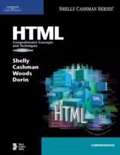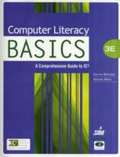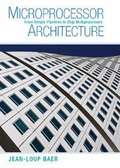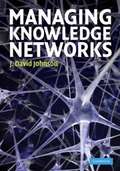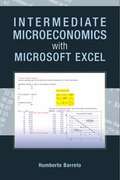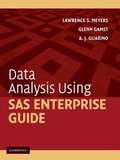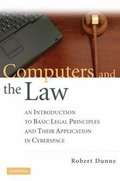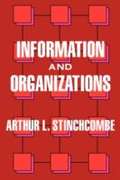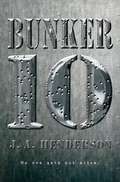- Table View
- List View
HTML: Comprehensive Concepts and Techniques
by Denise M. Woods Gary B. Shelly Thomas J. Cashman William J. DorinPart of the highly successful Shelly Cashman series, this introductory text leads the user through a clear, step-by-step, screen-by-screen approach to learning HTML. Readers learn how to create a Web page using HTML, format the page, add graphics, and more.
Twitter for Dummies, Pocket Edition
by Laura Fitton Michael E. Gruen Leslie PostonA fully updated guide to the how and why of using Twitter. The fastest-growing social network utility sports new features, and they're all covered in this how-to guide. This book shows you how to join them and why you should.
Computer Literacy BASICS: A Comprehensive Guide to IC3
by Dolores Wells Connie MorrisonBring your computer literacy course back to the BASICS. COMPUTER LITERACY BASICS: A COMPREHENSIVE GUIDE TO IC3 provides an introduction to computer concepts and skills, which maps to the newest Computing Core Certification (IC3) standards. Designed with new learners in mind, this text covers Computing Fundamentals, Key Applications, and Living Online - everything your students need to ace the IC3 exam, and finish the course as confident computer users.
Gregg College Keyboarding and Document Processing for Windows: Lessons 1-60
by Scot OberThis book is a multi component instructional program designed to give the student and the instructor a high degree of flexibility and a high degree of success in meeting their respective goals.
I Live in the Future and Here's How It Works: How New Media Is Creatively Disrupting Your World, Work, and Brain
by Nick BiltonExploring how the Internet is creating a new type of consumer, Bilton's book captures the zeitgeist of an emerging age, providing the understanding of how a radically changed media world is influencing human behavior.
Microprocessor Architecture: From Simple Pipelines to Chip Multiprocessors
by Jean-Loup BaerThis book gives a comprehensive description of the architecture of microprocessors from simple in-order short pipeline designs to out-of-order superscalars. It discusses topics such as - the policies and mechanisms needed for out-of-order processing such as register renaming, reservation stations, and reorder buffers - optimizations for high performance such as branch predictors, instruction scheduling, and load-store speculations - design choices and enhancements to tolerate latency in the cache hierarchy of single and multiple processors - state-of-the-art multithreading and multiprocessing emphasizing single chip implementations Topics are presented as conceptual ideas, with metrics to assess the performance impact, if appropriate, and examples of realization. The emphasis is on how things work at a black box and algorithmic level. The author also provides sufficient detail at the register transfer level so that readers can appreciate how design features enhance performance as well as complexity.
Managing Knowledge Networks
by J. David JohnsonThe information context of the modern organization is rapidly evolving in the face of intense global competition. Information technologies, including databases, new telecommunications systems, and software for synthesizing information, make a vast array of information available to an ever expanding number of organizational members. Management's exclusive control over knowledge is steadily declining, in part because of the downsizing of organizations and the decline of the number of layers in an organizational hierarchy. These trends, as well as issues surrounding the Web 2.0 and social networking, mean that it is increasingly important that we understand how informal knowledge networks impact the generation, capturing, storing, dissemination, and application of knowledge. This innovative book provides a thorough analysis of knowledge networks, focusing on how relationships contribute to the creation of knowledge, its distribution within organizations, how it is diffused and transferred, and how people find it and share it collaboratively.
Intermediate Microeconomics With Microsoft Excel
by Humberto BarretoThis unique text uses Microsoft Excel® workbooks to instruct students. In addition to explaining fundamental concepts in microeconomic theory, readers acquire a great deal of sophisticated Excel skills and gain the practical mathematics needed to succeed in advanced courses. In addition to the innovative pedagogical approach, the book features explicitly repeated use of a single central methodology, the economic approach. Students learn how economists think and how to think like an economist. With concrete, numerical examples and novel, engaging applications, interest for readers remains high as live graphs and data respond to manipulation by the user. Finally, clear writing and active learning are features sure to appeal to modern practitioners and their students. The website accompanying the text is found at www.depauw.edu/learn/microexcel.
Data Analysis Using SAS Enterprise Guide
by Lawrence S. Meyers Glenn Gamst A. J. GuarinoThis book presents the basic procedures for utilizing SAS Enterprise Guide to analyze statistical data. SAS Enterprise Guide is a graphical user interface (point and click) to the main SAS application. Each chapter contains a brief conceptual overview and then guides the reader through concrete step-by-step examples to complete the analyses. The eleven sections of the book cover a wide range of statistical procedures including descriptive statistics, correlation and simple regression, t tests, one-way chi square, data transformations, multiple regression, analysis of variance, analysis of covariance, multivariate analysis of variance, factor analysis, and canonical correlation analysis. Designed to be used either as a stand-alone resource or as an accompaniment to a statistics course, the book offers a smooth path to statistical analysis with SAS Enterprise Guide for advanced undergraduate and beginning graduate students, as well as professionals in psychology, education, business, health, social work, sociology, and many other fields.
Computers and the Law: An Introduction to Basic Legal Principles and Their Application in Cyberspace
by Robert DunneComputers and the Law provides readers with an introduction to the legal issues associated with computing - particularly in the massively networked context of the Internet. Assuming no previous knowledge of the law or any special knowledge of programming or computer science, this textbook offers undergraduates of all disciplines and professionals in the computing industry an understanding of basic legal principles and an awareness of the peculiarities associated with legal issues in cyberspace. This book introduces readers to the fundamental workings of the law in physical space and suggests the opportunity to create new types of laws with nontraditional goals.
Sonar 8 Power! The Comprehensive Guide
by Scott R. GarrigusSonar 8 Power! is the most recent edition of the best-selling Sonar Power book series providing detailed training for Cakewalk's Sonar 8 music recording software. Written for both new users and veteran upgraders alike, Sonar 8 Power! walks you through all of the features of the software with step-by-step instructions and exercises. New users will start at the beginning and learn everything they need to know to use Sonar 8 for recording, editing, producing, mixing, and bringing their music to the masses. Upgraders will learn about all the new features in Sonar 8 as well as enhancements to existing features that may affect their current production work flow.
Information and Organizations
by Arthur L. StinchcombeIn a mix of theoretical insights and anecdotal material, this book explores the ins and outs of organizations from both a macro and micro perspective that has long confronted business people and those interested in organizational theory.
Bunker 10
by Jan-Andrew HendersonAt eight o'clock in the evening, 24 December 2007, Pinewood Military Installation exploded. The blast ripped apart acres of forest and devastated the remote highland valley where the base was located. No official cause was given for the incident. Inside Pinewood were 185 male and female personnel--a mixture of scientists and soldiers. There were also seven teenagers. This is the story of their last day . . . Bunker 10 is a high-octane thriller perfect for fans of video games, science fiction, and television shows like 24.
Writing Excel Macros with VBA, 2nd Edition
by Steven RomanNewly updated for Excel 2002, Writing Excel Macros with VBA, 2nd Edition provides Excel power-users, as well as programmers who are unfamiliar with the Excel object model, with a solid introduction to writing Visual Basic for Applications (VBA) macros and programs for Excel. In particular, the book focuses on: * The Visual Basic Editor and the Excel VBA programming environment. Excel features a complete, state-of-the-art integrated development environment for writing, running, testing, and debugging VBA macros. The VBA programming language, the same programming language used by the other applications in Microsoft Office XP and 2000, as well as by the retail editions of Visual Basic 6.0. The Excel object model, including new objects and new members of existing objects in Excel 2002. Excel exposes nearly all of its functionality through its object model, which is the means by which Excel can be controlled programmatically using VBA. While the Excel object model, with 192 objects, is the second largest among the Office applications, you need to be familiar with only a handful of objects to write effective macros. Writing Excel Macros focuses on these essential objects, but includes a discussion of many more objects as well. Writing Excel Macros with VBA, 2nd Edition is written in a terse, no-nonsense manner that is characteristic of Steven Roman's straightforward, practical approach. Instead of a slow-paced tutorial with a lot of handholding, Roman offers the essential information about Excel VBA that you must master to write macros effectively. This tutorial is reinforced by interesting and useful examples that solve common problems you're sure to have encountered. Writing Excel Macros with VBA, 2nd Edition is the book you need to delve into the basics of Excel VBA programming, enabling you to increase your power and productivity.
Working with Microsoft Dynamics™ CRM 4.0, Second Edition
by Mike Snyder Jim StegerGet a practical, hands-on introduction to Microsoft Dynamics CRM 3.0, including topics on how to design, customize, integrate, and maintain Microsoft CRM implementations.
Windows XP Pocket Reference
by David KarpBuilding on the collection of hot-selling Windows XP books from O'Reilly, Windows XP Pocket Guide is a highly utilitarian tool that quickly covers XP's applications and tools, tasks and settings, and commands. Packed with useful information in an easy-to-read format, this handy little book is perfect for someone familiar with Windows who needs to support other users-as a formal or informal part of their job. This guide is easy to take and use anywhere.
Windows XP Annoyances for Geeks, 2nd Edition
by David KarpIn an ideal world, an operating system would do its job in the background, while you did yours in the foreground. In reality, though, operating systems often get in the way, fouling up the process at the most inopportune times. And Windows XP is no exception. O'Reilly's popular series for customizing and troubleshooting Windows once again comes to the rescue with Windows XP Annoyances for Geeks. Offering dozens of on-target tips, workarounds, and warnings, Windows XP Annoyances for Geeks allows users to improve their overall experience with the Windows XP operating system in every way possible. You'll learn how to use the Registry Editor; how to customize the interface beyond Microsoft's own intentions; and how to master Windows' built-in networking capabilities, including advanced technologies such as Internet Connection sharing, Remote Desktop sharing, and virtual private networking. And now, with this updated edition, you can also expect detailed coverage of the newly released Service Pack 2 (SP2) technology. SP2 is designed to make your work with the Windows XP operating system even easier and safer by providing superior protection against viruses, hackers, and worms. Among the core SP2 components covered in Windows XP Annoyances for Geeks are Windows Firewall, Pop-up Blocker for Internet Explorer, and the new Windows Security Center. David Karp, veteran author of several titles in the Windows Annoyances series, is behind the wheel of this comprehensive guide, as well. Karp points out numerous SP2-related quirks and unaccountable behaviors that are guaranteed to increase your level of perplexity and frustration. By recognizing these shortcomings, Windows XP Annoyances for Geeks arms you with the knowledge to overcome them. Karp leaves no stone unturned in providing the ultimate resource for the ever-expanding Windows XP market. As a result, you'll be able to seize complete control of the Windows XP operating system--instead of the other way around.
Windows Server® 2008 Hyper-V™ Resource Kit
by Janique Carbone Robert LarsonThe definitive resource for deploying, administering, and managing Microsoft Hyper-V (virtualization) technology in Windows Server 2008 direct from the experts. Get detailed technical guidance, plus a CD featuring an eBook and tools.
Windows Server® 2008 Administrator’s Pocket Consultant
by William Stanek<div xmlns="http://www.w3.org/1999/xhtml"><p>The fast-answers, daily-administration guide to Windows Server 2008. This pocket-sized reference features concise tables, listings, and step-by-step instructions for fast, accurate answers on the spot.</p></div>
Windows® Group Policy: Administrator’s Pocket Consultant
by William StanekThe fast-answers, daily-administration guide to Windows Group Policy administration. This pocket-sized reference features concise tables, listings, and step-by-step instructions for fast, accurate answers on the spot.
Windows PowerShell™ 2.0: Administrator’s Pocket Consultant
by William StanekGet ready answers for using Windows PowerShell 2.0 to manage multiple clients and servers. This practical, pocket-sized quick reference is packed with hundreds of examples that show you how to run commands and write scripts.
Windows 7 Step by Step
by Joan Preppernau Joyce CoxThe smart way to learn to Windows 7 4one step at a time! Work at your own pace through easy-to-follow lessons and hands-on exercises, building exactly the skills you need, just when you need them.
Windows Essential Business Server 2008: Administrator’s Companion
by J. C. MackinThe comprehensive, one-volume guide to deploying and managing Windows Essential Business Server 2008 for messaging and collaboration, security, data storage, support for line-of-business applications, and end-to-end network administration
Test-Driven Development in Microsoft® .NET
by Alexei Vorontsov James Newkirk<div xmlns="http://www.w3.org/1999/xhtml"><p>Apply the concepts and techniques of Test-Driven Development to building Microsoft .NET connected applications. Two experts in agile software development demonstrate by example how to use tests to drive lean, efficient coding and better design.</p></div>
Understanding the Linux Kernel, 3rd Edition
by Daniel P. Bovet Marco CesatiIn order to thoroughly understand what makes Linux tick and why it works so well on a wide variety of systems, you need to delve deep into the heart of the kernel. The kernel handles all interactions between the CPU and the external world, and determines which programs will share processor time, in what order. It manages limited memory so well that hundreds of processes can share the system efficiently, and expertly organizes data transfers so that the CPU isn't kept waiting any longer than necessary for the relatively slow disks. The third edition of Understanding the Linux Kernel takes you on a guided tour of the most significant data structures, algorithms, and programming tricks used in the kernel. Probing beyond superficial features, the authors offer valuable insights to people who want to know how things really work inside their machine. Important Intel-specific features are discussed. Relevant segments of code are dissected line by line. But the book covers more than just the functioning of the code; it explains the theoretical underpinnings of why Linux does things the way it does. This edition of the book covers Version 2.6, which has seen significant changes to nearly every kernel subsystem, particularly in the areas of memory management and block devices. The book focuses on the following topics: * Memory management, including file buffering, process swapping, and Direct memory Access (DMA) * The Virtual Filesystem layer and the Second and Third Extended Filesystems * Process creation and scheduling * Signals, interrupts, and the essential interfaces to device drivers * Timing * Synchronization within the kernel * Interprocess Communication (IPC) * Program execution Understanding the Linux Kernel will acquaint you with all the inner workings of Linux, but it's more than just an academic exercise. You'll learn what conditions bring out Linux's best performance, and you'll see how it meets the challenge of providing good system response during process scheduling, file access, and memory management in a wide variety of environments. This book will help you make the most of your Linux system.
